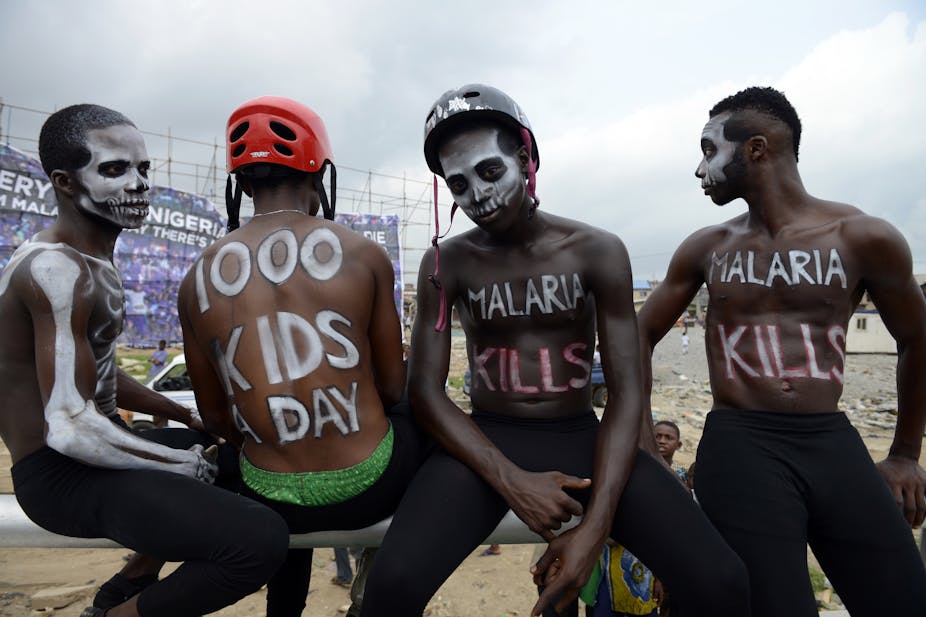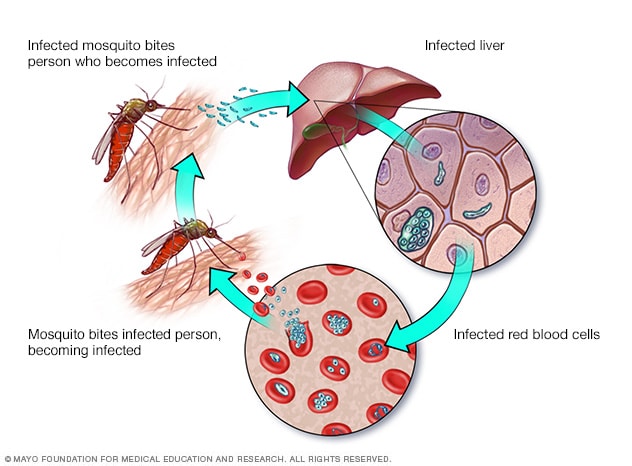Bednets: Saving African Lives From Malaria
"Malaria is a major public health problem and can be life-threatening. The disease, mostly found in tropical countries, is transmitted to humans by the female Anopheles mosquito.""Nearly half of the world’s population is at risk of the disease. In 2021, for instance, around 247 million cases of malaria were reported and about 619,000 people died.""Four African countries accounted for just over half of all malaria deaths worldwide: Nigeria (31.3%), the Democratic Republic of the Congo (12.6%), Tanzania (4.1%) and Niger (3.9%)."The Conversation
 |
| Lagos residents use art to draw attention to the gaps in the prevention and treatment of malaria. According to UNICEF, over 1,000 children under the age of 5 catch malaria every day. Pius Utomi Ekpei/AFP via Getty Images |
"The existence of malaria anywhere is an interaction between the environment and the organism responsible for the disease, the mosquito.""When you look at an environment, you’re looking at a variety of natural factors – such as temperature, humidity and rainfall – and man-made factors, such as drainage systems.""This is because certain conditions allow mosquitoes to thrive – specifically moisture-rich environments. Mosquitoes breed by laying their eggs in stagnant water."The Conversation
Malaria was seen to thrive a century ago as far north as Siberia and the Arctic Circle. The disease was endemic in 36 states of the United States, Washington, Michigan and New York included. At that time, malaria was estimated to have killed 80,000 people yearly in North America and Europe. That was then; most of the developed world saw malaria eliminated in the 1950s thanks largely to medication and insecticides.
An improvement in nutrition saw people becoming healthier and better able to fight off infection even as mosquito-breeding marshes were drained. Quinine and synthetic chloroquine lifted developed countries out of the malaria syndrome, where affordable treatment became available even as insecticides eliminated many mosquito populations. Annual death rates sank from over three million in 1930 to less than 30,000 at present outside of sub-Saharan Africa.
It is in Africa to the present day where malaria has remained a threat, with the disease killing over a half-million people annually. The malaria parasite indigenous to Africa is the deadliest of strains, that have developed resistance to the common medicine, chloroquine. Malaria-spreading mosquitoes prevalent in Africa feed almost exclusively on human blood. The progress against the spread of malaria in Africa in the 2000s was set back with the onset of the global pandemic.
An early program to rid the world of malaria, The Global Malaria Eradication Program established in 1944 was abandoned 14 years later, its goal thought to be unachievable. The United Nations launched a global promise in 2015 known as the Sustainable Development Goals where nations undertook the ambitious project of tackling malaria, among other global ills. Unfortunately progress has not lived up to expectations; at the current rate, it is foreseen the goal to eradicate malaria may take hundreds of years according to Bjorn Lomborg whose think tank, The Copenhagen Consensus is leading the fight to eradicate malaria.
Current research on malaria proposes a ten percent increase in the use of bednets in the 29 highest-burden countries in Africa, to be used alongside other strategies to foil insecticide resistance. Enabling people vulnerable to malaria to sleep under insecticide-treated bednets is recognized as one of the most effective methods of preventing malaria since mosquitoes are blocked by the netting and the insecticide kills them -- at the cost of under $4 per net.
Research indicates that 242 million fewer people will become ill in 2030, dramatically reducing health-care costs, with the universal use of bednets. Malaria symptoms
usually appear within seven to 30 days but can take up to a year to
develop. Symptoms may include high fevers and shaking chills, basically flu-like
illness.
"We have allowed malaria to turn into a disease of poverty in Africa. While we cannot deliver on all the global UN promises, we can do the smartest things first.""Distributing and using insecticide-treated bednets will cost [relatively] little but save 1.3 million lives."Bjorn Lomborg, president, Copenhagen Consensus, visiting fellow, Stanford University's Hoover Institution
Signs and symptoms of malaria may include:
- Fever
- Chills
- General feeling of discomfort
- Headache
- Nausea and vomiting
- Diarrhea
- Abdominal pain
- Muscle or joint pain
- Fatigue
- Rapid breathing
- Rapid heart rate
- Cough
Labels: Africa, Copenhagen Consensus, Insecticidal Bednets, Malaria, United Nations


0 Comments:
Post a Comment
<< Home